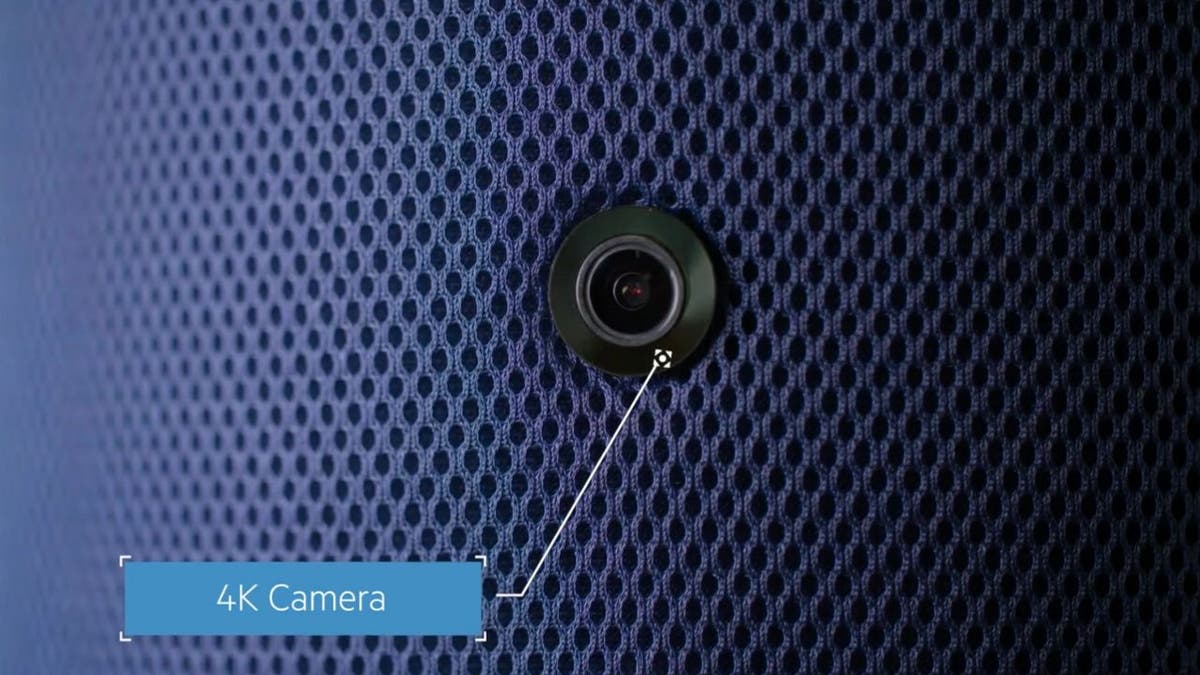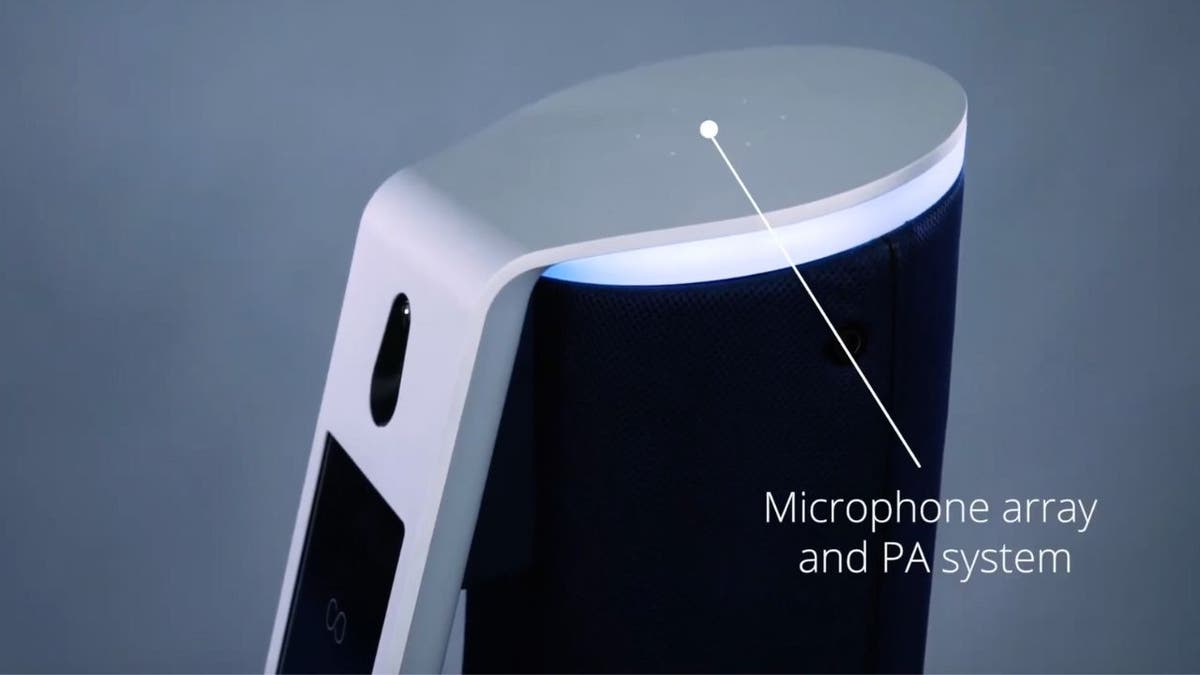The fate of Google’s search business is now in the hands of Judge Amit Mehta, as closing arguments concluded in the landmark trial on Friday.
Technology
As Google’s antitrust trial wraps, DOJ seeks sanctions over missing messages
/cdn.vox-cdn.com/uploads/chorus_asset/file/24016883/STK093_Google_06.jpg)
The Department of Justice and plaintiff states made their last arguments Thursday on Google’s alleged anticompetitive conduct in the general search market, and on Friday focused on its allegedly illegal conduct in search advertising. Google was also under fire (separately) for failing to retain chat messages that the DOJ believes could have been relevant to the case.
The government is trying to show that Google locked up key distribution channels for the general search engine market, so that would-be rivals could not grow into significant threats. It says it did so through contracts with phone manufacturers and browser companies to be their exclusive default search engine. If the judge agrees that Google successfully foreclosed competition in that market, he can consider the government’s arguments about the search advertising market as evidence of anticompetitive conduct.
In his summary, DOJ attorney Kenneth Dintzer said that the last major tech monopoly decision, US v. Microsoft, “fits like a glove” on Google. Google’s lead litigator in the case, John Schmidtlein, disagreed. In Microsoft, he said, manufacturers were coerced into deals and customers were spoon-fed an inferior product they didn’t want. “Google has won with a superior product,” he said.
“The importance and significance of this case is not lost on me,” Mehta said as he concluded Friday’s court proceedings. “Not only for Google, but for the public.”
An adequate substitute for Google ads
If Google charges higher prices for advertising, are there suitable substitutes that advertisers would flee to? The answer to that question can say a lot about whether or not Google has the monopoly power that the DOJ alleges it has created through the contracts it has to be the default search engine on various browsers and devices. Google says there’s plenty of alternatives for advertisers; the government disagrees.
Mehta seemed sympathetic to the government’s arguments, though he acknowledged that alternatives to Google are robust ad companies in their own right. Amazon, for instance, isn’t exactly an inferior substitute to Google for ads, said Mehta. Unlike wrapping a sandwich in newspaper instead of cellophane, Mehta said, “If you move your ad money from Google to Amazon, you’re not wrapping your ad in newspaper.”
But Mehta later differentiated ad platforms like Facebook and TikTok from Google. Users searching on Google come with a strong idea of what they’re looking for, pretty much spelling it out in the query. Social media platforms often have to infer that intent from indirect signals.
In 2017, Google ran an experiment over several weeks and found it could increase prices five to 15 percent while still growing revenue
In 2017, Google ran an experiment over several weeks and found it could increase prices five to 15 percent while still growing revenue. “Google is able to decide on what the margin that they are going to acquire is. And that’s why they’re running experiments to say, ‘well if we up it by 15 percent, how much are we going to lose in revenue?’” Mehta said to Schmidtlein. “That’s something that only a monopolist could do, right?” Schmidtlein disagreed, saying it’s fair to run pricing experiments to figure out if they’re charging the right price.
Mehta pointed out that there was “no evidence that Google ever looks at a competitors’ pricing” for that purpose. Schmidtlein responded it wasn’t that simple. Because ads are sold through a complicated auction, not even Google has total insight into the pricing mechanism behind it. It simply isn’t the same as a Coca-Cola rep walking through a grocery store to see Pepsi’s prices.
Sabotaging ads on Bing
The plaintiff states — the attorneys general for 38 states led by Colorado and Nebraska that brought the suit alongside the DOJ — are also arguing that Google intentionally dragged its feet when building certain features for SA360, its search engine marketing tool. SA360 helps advertisers manage ads through different platforms — not just Google, but competitors like Microsoft’s Bing.
The states say that Google lagged behind in building a SA360 feature for Bing ads when it had already implemented it for Google search ads.
“The evidence here is a little bit tricky for Google,” Mehta said, noting the significance of Google having said rather publicly at the start that it was “not going to play favorites” when it came to SA360. While Google could have chosen to exclude Microsoft from the tool at the outset, “that’s not the choice they made,” Mehta said.
The tool was not delivered for nearly five years after Microsoft asked for it. “How can that not be at least inferred to be anticompetitive?” Mehta asked.
Deleted chats
Hanging over the whole case is an issue about whether Google intentionally deleted or failed to retain documents that might have been used as evidence in this trial.
Google had a policy of having “history off” on its chats by default, leaving it to employees to determine when to turn it on for relevant conversations. DOJ’s Dintzer called the alleged destruction of documents “unequivocal and honestly breathtaking.” He added that “there’s no question” executives “intentionally had conversations with history off.”
“Google’s retention policy leaves a lot to be desired,” said the judge, adding disapprovingly that it was “surprising to me that a company would leave it to their employees to decide when to preserve documents.”
“Google’s retention policy leaves a lot to be desired”
Soon after, Dintzer’s slide deck paused on a slide that simply read “This is Wrong,” as the DOJ attorney pointed out Google never apologized for the unretained documents nor promised not to do it again in the future. He said it’s imperative that the court impose sanctions that show the risk of destroying documents is not worthwhile. The DOJ is asking Mehta to make an adverse inference about Google for any element of the case where he doesn’t think plaintiffs have sufficient evidence. That would mean the judge would assume that any deleted chats would have been bad for Google and showed their anticompetitive intent behind their contracts with manufacturers and browsers. The DOJ also wants Mehta to take the destroyed chats as a signal of its anticompetitive intent.
Google attorney Colette Connor said the company’s lawyers had informed the state of Texas (one of the plaintiffs) early on about their retention policies. Dintzer said even that disclosure came months after the litigation hold and that the DOJ “clearly” would have acted had they known.
Mehta didn’t seem to buy Google’s defense. “It’s interesting to me that Google has been very deliberate — and perhaps after seeing what’s happened with Microsoft – very deliberate in advising employees in what not to say,” he said. In a training for employees, the company advised avoiding terms like “market share.” (Bloomberg Law has noted this is a common practice in large companies.)
It’s now up to Mehta to decide how those absent chats should be accounted for. He hasn’t provided a timeline for his decision, but in the meantime, Google and the DOJ will be preparing for their second antitrust face-off over advertising technology in the fall.

Technology
Microsoft’s Surface AI event: news, rumors, and lots of Qualcomm laptops
/cdn.vox-cdn.com/uploads/chorus_asset/file/24038601/acastro_STK109_microsoft_02.jpg)
The Snapdragon X Plus is Qualcomm’s entry-level laptop chip. It has 10 cores, 42MB of cache, a maximum multithreaded frequency of 3.4GHz, and an NPU with 45 tera operations per second (TOPS, or how many mathematical calculations it can solve in a second) to assist with fancy-smancy generative AI applications. But keep in mind, TOPS is an arbitrary measurement that can sound more impressive than it is because it doesn’t necessarily take into account the type or quality of those calculations.
Technology
New Teslas might lose Steam
/cdn.vox-cdn.com/uploads/chorus_asset/file/24323284/Screenshot_2022_12_29_at_3.29.06_AM.jpeg)
Tesla might be dropping Steam support on some new deliveries of Model X, according to a message from the company shared by a Reddit user who is expecting to take delivery of the long-range version of the electric SUV.
Tesla’s message alerts the customer that the company is “updating the gaming computer” in the Model X and says it’s “no longer capable of playing Steam games.” The message ends with a button for the customer to confirm they will proceed with the delivery.
There’s no indication that other Tesla models will be affected. And we’re not seeing any signs that the automaker plans to remove Steam from current owners’ vehicles through a software update. However, Tesla’s already seems to be leaning toward dropping Steam support for some other models.
Steam isn’t available in the Cybertruck, for example, and Tesla hasn’t said whether it plans on bringing the gaming platform to its bestselling Model Y and Model 3 vehicles, despite newer models sporting improved AMD Ryzen processors. The company has already removed some games over the years, including Sonic the Hedgehog.
Technology
Is this autonomous security guard robot the protection you need?

They’re not your typical office workers. Standing at 5 feet tall and cruising through the corridors at a leisurely 3 mph, these robotic guards are the latest addition to workplace security.
Gone are the days of the traditional security guard. Now, robots are taking over the night shift and beyond.
How do these security robots work?
Cobalt’s robots are custom-built to navigate the unique challenges of each building, from ramps to elevators. They patrol the hallways, vigilant for signs of trouble – be it an unusual motion after hours or a door left ajar – and report their findings to a human-staffed call center.
CLICK TO GET KURT’S FREE CYBERGUY NEWSLETTER WITH SECURITY ALERTS, QUICK VIDEO TIPS, TECH REVIEWS AND EASY HOW-TO’S TO MAKE YOU SMARTER
These robots can even spot things that might escape the watchful eye of a security camera. They can do this because they are equipped with a depth camera, heat-detecting thermal sensors, 4K cameras that can see 360 degrees, Lidar, as well as a Microphone array for listening and PA system for announcing.

Interactivity and assistance of the security robot
With a simple tap on the screen, employees can summon a 24/7 specialist to address concerns ranging from spills, unwelcome visitors or suspicious activity. This seamless integration of technology and human oversight lets real-life guards spend more time responding and less time observing now that Cobalt is carefully watching on patrol and reporting back what it detects.
WHAT IS ARTIFICIAL INTELLIGENCE (AI)?

MORE: ELECTRIC HUMANOID ROBOT TO SHAKE UP THE JOB MARKET
Case study: DoorDash
DoorDash has embraced Cobalt’s robotic guards across its corporate sites. The result? Enhanced security operations with fewer sick days, no HR complaints, and a boost in both accuracy and response times for security and safety-related incidents.

MORE: THE SHAPE-SHIFTING UNDERWATER ROBOT PIONEERING THE DEPTHS OF THE SEA
Robots vs. humans: The numbers
The driving force behind this robotic revolution is money. It’s far more economical for companies to deploy robots for round-the-clock security than to rely solely on human guards. According to Forrester Research, opting for a robotic guard over a human can lead to substantial savings – around $79,000 annually. That’s a figure that’s hard to ignore for any business looking to optimize its operations.

MORE: APOLLO THE ROBOT JOINS MERCEDES-BENZ ASSEMBLY LINE PRODUCTION
The competitive landscape of the security robot
The security robot market is heating up, with competition between indoor and outdoor models. While Cobalt’s robots are indoor specialists, others like Knightscope and SMP Robots are venturing into both terrains, including malls, hotels and industrial sites. And let’s not forget drones, which are starting to make their mark in the security domain.

Challenges and considerations of security robots
Of course, it’s not all smooth sailing. Security robots have had their share of mishaps, from minor accidents to malfunctioning in critical situations. And there’s the human factor to consider. Sometimes, nothing can replace the reassurance of a human presence in times of distress.

Kurt’s key takeaways
Despite the occasional glitch, the consensus is clear: Security robots are here to stay, and their presence is set to grow as the technology continues to advance. They may not replace human guards entirely, but they’re redefining the role and allowing humans to focus on more strategic tasks.
What’s your take on these new robot guards? Do you think they’re as trustworthy as human security or are we moving too fast into a tech-driven safety zone? Let us know by writing us at Cyberguy.com/Contact.
For more of my tech tips and security alerts, subscribe to my free CyberGuy Report Newsletter by heading to Cyberguy.com/Newsletter.
Ask Kurt a question or let us know what stories you’d like us to cover.
Answers to the most asked CyberGuy questions:
Copyright 2024 CyberGuy.com. All rights reserved.
-

 Politics1 week ago
Politics1 week agoRFK Jr said a worm ate part of his brain and died in his head
-

 World1 week ago
World1 week agoPentagon chief confirms US pause on weapons shipment to Israel
-

 World1 week ago
World1 week agoConvicted MEP's expense claims must be published: EU court
-

 News1 week ago
News1 week agoStudents and civil rights groups blast police response to campus protests
-

 Politics1 week ago
Politics1 week agoCalifornia Gov Gavin Newsom roasted over video promoting state's ‘record’ tourism: ‘Smoke and mirrors’
-

 Politics1 week ago
Politics1 week agoOhio AG defends letter warning 'woke' masked anti-Israel protesters they face prison time: 'We have a society'
-

 News1 week ago
News1 week agoNine Things We Learned From TikTok’s Lawsuit Against The US Government
-

 Politics1 week ago
Politics1 week agoBiden’s decision to pull Israel weapons shipment kept quiet until after Holocaust remembrance address: report













